- The active substance is apraclonidine 1%w/v (10mg/ml) (as hydrochloride).
- Single Dose Unit
- Prescription Product
- Description
- Additional Information
- Brand
- How To Use
- Product Details
- Side Effects
- Ingredient
- Reviews (0)
- Questions & Answers
Iopidine Eye Drops 1% – Apraclonidine Eye Drops 1%, 24 SDU
Introducing Iopidine Eye Drops 1% – the perfect solution for those who have undergone laser surgery and are looking to control or prevent the pressure in their eyes from increasing. Iopidine contains apraclonidine, which has been clinically proven to be effective in managing post-laser eye pressure.
Iopidine is easy to use and can be applied directly to the affected eye(s) as needed. Simply instill as directed by your doctor. You should start to see a decrease in eye pressure within 24 hours of using Iopidine.
If you’re looking for a safe and effective way to keep your post-laser eye pressure under control, then look no further than Iopidine Eye Drops 1%. Try them today and see the difference for yourself! Speak to your eye consultant today
What is Laser eye surgery
laser eye treatment – to open up the blocked drainage tubes or reduce the production of fluid in your eyes. This is one of the treatments for Glaucoma.
What is Glaucoma?
Glaucoma is a common eye condition where the optic nerve, which connects the eye to the brain, becomes damaged.
It’s usually caused by fluid building up in the front part of the eye, which increases pressure inside the eye.
Your eye contains a clear, watery liquid that feeds the inside of the eye. Liquid is constantly being drained out of the eye and new liquid is made to replace this. If the liquid cannot drain out quickly enough, the pressure inside the eye builds up. This medicine works by increasing the amount of liquid that is drained. This reduces the pressure inside the eye. If the high pressure is not reduced, it could lead to a disease called glaucoma and eventually damage your sight.
Glaucoma can lead to loss of vision if it’s not diagnosed and treated early.
It can affect people of all ages, but is most common in adults in their 70s and 80s.
Glaucoma does not usually cause any symptoms to begin with.
It tends to develop slowly over many years and affects the edges of your vision (peripheral vision) first.
For this reason, many people do not realise they have glaucoma, and it’s often only picked up during a routine eye test.
If you do notice any symptoms, they might include blurred vision, or seeing rainbow-coloured circles around bright lights.
Both eyes are usually affected, although it may be worse in 1 eye.
Very occasionally, glaucoma can develop suddenly and cause:
Visit an opticians or a GP if you have any concerns about your vision.
If you have glaucoma, early diagnosis and treatment can help stop your vision getting worse.
Without treatment, glaucoma can eventually lead to blindness.
If you develop symptoms of glaucoma suddenly, go to your nearest eye casualty unit or A&E as soon as possible.
This is a medical emergency that may require immediate treatment.
There are several different types of glaucoma.
The most common is called primary open angle glaucoma. This tends to develop slowly over many years.
It’s caused by the drainage channels in the eye becoming gradually clogged over time.
Other types of glaucoma include:
- acute angle closure glaucoma – an uncommon type caused by the drainage in the eye becoming suddenly blocked, which can raise the pressure inside the eye very quickly
- secondary glaucoma – caused by an underlying eye condition, such as inflammation of the eye (uveitis)
- childhood glaucoma (congenital glaucoma) – a rare type that occurs in very young children, caused by an abnormality of the eye
Glaucoma can occur for a number of reasons.
Most cases are caused by a build-up of pressure in the eye when fluid is unable to drain properly.
This increase in pressure then damages the nerve that connects the eye to the brain (optic nerve).
It’s often unclear why this happens, although certain things can increase the risk, including:
- your age – glaucoma becomes more common as you get older
- your ethnicity – people of African, Caribbean or Asian origin are at a higher risk
- your family history – you’re more likely to develop glaucoma if you have a parent or sibling with the condition
- other medical conditions – such as short-sightedness, long-sightedness and diabetes
It’s not clear whether you can do anything to prevent glaucoma, but having regular eye tests should pick it up as early as possible.
The treatment recommended for you will depend on the type of glaucoma you have, but the options are:
- eyedrops – to reduce the pressure in your eyes
- laser treatment – to open up the blocked drainage tubes or reduce the production of fluid in your eyes
- surgery – to improve the drainage of fluid
You’ll also probably need regular appointments to monitor your condition and check the treatment is working.
Further Information on Glaucoma
Iopidine Eye Drops 1% Reviews
After using Iopidine Eye Drops 1%, it’s helpful to let others know about your experience. Reviews of an item help other users know that medicines received have helped the condition it is claimed for, how well the treatment worked or any issues to be aware of. We invite our users to leave a review of both their treatment and of the service provided. Click on the reviews tab to see if there has been feedback on this item.
What is the price of Iopidine Eye Drops 1%?
The price of Iopidine Eye Drops 1% is £141.40
Where to buy Iopidine Eye Drops 1%
Iopidine Eye Drops 1% is available to buy with a prescription at Dock Pharmacy Essex UK, UK Online Pharmacy.
You can buy Iopidine Eye Drops 1% uk with a private prescription or with a vets prescription.
Related Article
Glaucoma Symptoms, Causes, Treatment
| Brand | |
|---|---|
Brand
IOPIDINE
How To Use
How To Use
Adults and elderly
IOPIDINE comes in a specially designed container which can be used only once. Your doctor will put
in one drop 1 hour before your laser surgery and another drop immediately after surgery.
3
After being given IOPIDINE, you will be instructed to press a finger to the corner of your eye, by your
nose. This helps to stop IOPIDINE getting into the rest of the body.
If more than one ophthalmic medicinal product is being used, the medicines must be administered at
least 5 minutes apart. Eye ointments should be administered last.
Children
This medicine is not for use in children
Product Details
Before you are given IOPIDINE
This medicine may not be suitable for you. If it is not suitable your doctor may want to give you
another medicine so it is important you check all of the points below:
IOPIDINE will not be used
* in children (this medicine is not for anyone under the age of 18);
** If you are allergic to clonidine, apraclonidine or any of the ingredients listed in the “Other
ingredients” section of this leaflet (section 6)
* if you have a history of any severe or unstable and uncontrolled heart disease (including chest
pain, angina, heart attacks or heart failure);
* if you are currently taking monoamine oxidase inhibitor antidepressants
If you think any of the above conditions apply to you or if you are not sure, talk to your doctor first.
Special care will be taken using IOPIDINE.
Ask your doctor for advice if:
* you suffer from, or are taking medication for:
– heart disease (including chest pain, angina, heart attacks or heart failure;
– high blood pressure;
– circulatory problems (including stroke, Raynaud’s disease or Buerger’s disease);
– vasovagal attacks (fainting spells);
– reduced kidney or liver function;
2
If any of the above apply to you, you may be at greater risk for effects on your heart or circulatory
system so your blood pressure and heart rate will be closely monitored.
* you suffer from depression, as medicines like clonidine have been associated with depression;
* you suffer from diabetes or low blood sugar, as this medicine may hide the signs and symptoms
of a sudden reduction in blood sugar such as a fast heartbeat or trembling;
* you regularly drink alcohol, as IOPIDINE may increase its effect;
* you have had an extreme response to other medicines that lower the pressure inside your eye,
so your eye pressure should be monitored closely;
If any of the above applies to you, or if you are not sure, talk to your doctor first.
Using other medicines
IOPIDINE will not be used
* if you are taking monoamine oxidase inhibitors (used to treat depression) e.g. phenelzine,
isocarboxazid, tranylcypromine, moclobemide
* if you are taking tricyclic antidepressants (often used to treat depression) e.g. amitriptyline,
imipramine, doxepin, mianserin, trazodone, dosulepin, lofepramine;
* if you are currently using medicines containing sympathomimetic agents.
These agents are used to treat many diseases, including asthma e.g. salbutamol, terbutaline,
bambuterol, Parkinson’s disease and heart disease and also may be present in cough and cold
remedies.
Special care will be taken using IOPIDINE
* if you are using eye drops to treat glaucoma which contain sympathomimetics e.g.
phenylephrine, brimonidine, dipivefrine as your blood pressure may increase; or
* if you are taking sleeping tablets, sedatives or painkillers, as IOPIDINE may increase their
effects;
* if you are taking or have taken neuroleptics (major tranquillisers used to treat some forms of
mental illness e.g. chlorpromazine, flupentixol, haloperidol) as your blood pressure could become
too low;
When there might be effects on your blood pressure then your blood pressure and heart rate will be
closely monitored.
Discuss any medicines you are taking with your doctor before you are given IOPIDINE, including
medicines obtained without a prescription.
Using IOPIDINE with food and drink
IOPIDINE should be used with caution if you regularly drink alcohol or have recently drunk alcohol.
Use during pregnancy and breastfeeding
Iopidine should not be used if you are pregnant, planning to become pregnant or are breastfeeding,
Your doctor should have discussed this with you. If not, ask your doctor for advice before taking any
medicine.
Driving and using machines
This type of medicine may cause you to feel sleepy. If you are affected, do not drive or use any tools or machines.
How IOPIDINE is stored
• This medicine should not be used after the expiry date shown as ‘EXP’ on the package and
plastic container. The expiry date refers to the last day of that month.
• This medicine should not be stored above 25°C and should be kept in the outer carton to protect it from the light.
• Keep out of the reach and sight of children.
• The medicine should be used immediately after opening the container
Side Effects
Possible side effects
Like all medicines, IOPIDINE can have side effects, although not everybody gets them.
When used before and after laser surgery, you may experience some or all of the following
reactions in your eyes.
Common
(may affect up to one in 10 people treated)
– redness in the eye or eyes.
– one pupil getting bigger
– Inability to close eye
– an eye disorder (whitening of the surface of the eye)
– an unusual or uncomfortable feeling in your eyes
– your eye feeling dry
Uncommon
(may affect up to one in 100 people treated)
– bleeding on the surface of your eye (conjunctival haemorrhage);
– eye inflammation (which may include pain, heat, redness or swelling of the eye); or
– your upper eyelid lifting up.
– extremely low pressure inside the eye (your doctor will see this during eye tests);
– reduced or dim vision;
– bleeding on the surface of your eye;
– blurred vision;
– eye allergy;
– your upper eyelid lifting;
– your eye itching;
– an eye disorder (whitening of the surface of the eye);
– eye irritation;
Or, you may suffer reaction in other areas of your body.
Common
(may affect up to one in 10 people treated)
– a dry feeling in your nose
– a bad or unusual taste in your mouth;
Uncommon
(may affect up to one in 100 people treated)
– an irregular heartbeat.
4
– difficulty sleeping;
– disturbed dreams;
– fainting spells;
– burning or tingling sensations;
– a lower sex drive;
– feeling irritated;
– a slow heartbeat or palpitations;
– dizziness or feeling faint when you sit up or stand up;
– diarrhoea;
– being sick or vomiting;
– pain or discomfort in your stomach.
– headaches;
– tiredness;
Rare
(may affect up to one in 1000 people treated)
– reduced sensation or numbness;
– shortness of breath;
– a runny nose or too much saliva;
– a dry feeling, or burning in your nose;
– a dry mouth;
– increased sweating;
– itching skin;
– pain in your arms or legs;
– heaviness or pain in your chest;
– feeling hot or cold.
Not known (frequency cannot be estimated from available data;
– decreased blood pressure
– increased blood pressure
If you experience an allergic reaction, feel unusually dizzy or lightheaded, or experience irregular
heartbeats, you should tell your doctor immediately.
Reporting of side effects
If you get any side effects, talk to your doctor or pharmacist. This includes any possible side effects
not listed in this leaflet. You can also report side effects directly via the national reporting system (see
details below). By reporting side effects you can help provide more information on the safety of this
medicine
Ingredient
The active substance is apraclonidine 1%w/v (10mg/ml) (as hydrochloride).
Other ingredients are sodium acetate, sodium chloride and purified water. Very small amounts of
hydrochloric acid or sodium hydroxide may have been added to make the drops comfortable for your
eyes.
IOPIDINE eye drops solution is pale yellow and comes in a container of 0.25 ml.
Only logged in customers who have purchased this product may leave a review.
Questions and answers of the customers
There are no questions yet, be the first to ask something for this product.
You Might Also Like
Original price was: £16.00.£14.39Current price is: £14.39.
- Treatment of eye inflammation after surgery
- Suitable for Adults
- Can be used Dogs / Cat
Original price was: £16.00.£14.39Current price is: £14.39.
- Availability: in stock
Original price was: £17.90.£16.30Current price is: £16.30.
- Active Ingredient: Apraclonidine 0.5%
- Treatment of Chronic Glaucoma
- Prescription Product
Learn More
Original price was: £17.90.£16.30Current price is: £16.30.
- Availability: in stock
Original price was: £11.50.£9.90Current price is: £9.90.
Voltarol Ophtha Eye Drops – Diclofenac Eye Drops, 5ml Voltarol Ophtha Eye Drops provide long-lasting relief from pain and inflammation due to eye discomfort. The active ingredient, diclofenac sodium 0.1%, is part of a group of effective non-steroidal anti-inflammatory drugs (NSAIDs) that reduce swelling. Voltarol Ophtha Eye Drops are used: before eye surgery, to help […]
Learn MoreOriginal price was: £11.50.£9.90Current price is: £9.90.
- Availability: out of stock
Original price was: £16.50.£13.50Current price is: £13.50.
- Treatment for Glaucoma
- Active ingredient: brinzolamide
Learn More
Original price was: £16.50.£13.50Current price is: £13.50.
- Availability: in stock
VOLTAROL OPHTHA
Learn More£6.90 – £48.10
- Availability: in stock
Other Products From This Seller
£69.50 – £79.95
Griseofulvin Oral Suspension, 200ml Griseofulvin Oral Suspension – Reliable Solution for Fungal Infections Griseofulvin Oral Suspension is a trusted antifungal medication designed to treat infections caused by fungi affecting the hair, skin, scalp, groin, feet, and nails, including ringworm, athlete’s foot, and jock itch. This suspension works by targeting and killing fungi, incorporating itself into […]
Learn More£69.50 – £79.95
- Availability: in stock
Griseofulvin 500mg Tablets, 100 Tablets Griseofulvin 500mg Tablets – Powerful Antifungal Treatment for Fungal Skin Infections Griseofulvin 500mg Tablets are a trusted solution for treating fungal infections affecting the skin, hair, and nails. This antifungal medication works by targeting the fungi responsible for conditions like ringworm, athlete’s foot, jock itch, and nail infections. Griseofulvin incorporates […]
Learn More£174.50
- Availability: in stock
Original price was: £196.50.£189.50Current price is: £189.50.
Fludrocortisone Acetate Solution 0.1mg/ml, 50ml Fludrocortisone Acetate Solution 0.1mg/ml, 50ml is a trusted liquid corticosteroid for treating adrenal insufficiency and electrolyte imbalances in humans and pets. This versatile solution is ideal for managing Addison’s disease and other adrenal health concerns, particularly in cats and dogs. Key Benefits For Humans: Effective treatment for adrenal insufficiency and […]
Learn MoreOriginal price was: £196.50.£189.50Current price is: £189.50.
- Availability: in stock
Fluoxetine Dispersible Tablets 20mg, 28 Tablets Fluoxetine Dispersible Tablets 20mg, 28 Tablets are a highly effective treatment for anxiety, depression, and behavioral challenges in both humans and pets. Whether you’re managing emotional health or addressing behavioral concerns in your furry friends, these tablets offer reliable and trusted relief. Why Choose Fluoxetine Dispersible Tablets? Versatile Treatment […]
Learn More£5.50
- Availability: in stock
Original price was: £34.99.£24.95Current price is: £24.95.
Wahl Extreme Grip Beard Trimmer Precision Grooming with Comfort Grip and Adjustable Cutting Lengths Take Control of Your Grooming with the Wahl Extreme Grip Beard Trimmer Transform your grooming routine with the Wahl Extreme Grip Beard Trimmer, designed for precision, comfort, and versatility. Whether you’re sculpting a sharp beard line, maintaining stubble, or styling longer […]
Learn MoreOriginal price was: £34.99.£24.95Current price is: £24.95.
- Availability: in stock
Original price was: £23.99.£17.95Current price is: £17.95.
WAHL Vogue Corded Hair Clipper for Men Professional Precision with Adjustable Taper Lever and High-Carbon Steel Blades Transform Your Grooming Routine with the WAHL Vogue Corded Hair Clipper for Men Elevate your grooming experience with the WAHL Vogue Corded Hair Clipper, a professional-grade grooming tool designed for men who value precision and performance. Whether you’re […]
Learn MoreOriginal price was: £23.99.£17.95Current price is: £17.95.
- Availability: in stock
Original price was: £30.00.£8.95Current price is: £8.95.
Wahl Peaky Blinders Beard Trimmer Gift Set Limited Edition Cordless Grooming Kit for Men Join the ranks of the Peaky Blinders with the Wahl Peaky Blinders Beard Trimmer Gift Set. This exclusive collaboration between Wahl and the iconic TV series offers a comprehensive grooming solution for the modern gentleman. Key Features: Rechargeable Cordless Trimmer: Equipped […]
Learn MoreOriginal price was: £30.00.£8.95Current price is: £8.95.
- Availability: in stock
Original price was: £54.63.£39.95Current price is: £39.95.
OMRON RS2 Wrist Blood Pressure Monitor Compact and Accurate BP Monitoring The OMRON RS2 Wrist Blood Pressure Monitor is a compact and user-friendly device designed for quick and accurate blood pressure and pulse rate measurements. Utilizing the oscillometric method, it ensures reliable readings with minimal user input. Key Features: Automatic Inflation: The device inflates the […]
Learn MoreOriginal price was: £54.63.£39.95Current price is: £39.95.
- Availability: in stock
Original price was: £69.99.£59.99Current price is: £59.99.
Omron M4 Intelli IT Blood Pressure Monitor Bluetooth-Enabled Upper Arm BP Monitor with Intelli Wrap Cuff The Omron M4 Intelli IT Blood Pressure Monitor is a clinically validated device designed for easy and accurate blood pressure monitoring at home. With Bluetooth connectivity, it seamlessly syncs your readings to the Omron Connect app, allowing you to […]
Learn MoreOriginal price was: £69.99.£59.99Current price is: £59.99.
- Availability: in stock
Original price was: £39.99.£33.95Current price is: £33.95.
Omron M2+ Upper Arm Blood Pressure Monitor The Omron M2+ Upper Arm Blood Pressure Monitor is a fully automatic device designed to provide quick and accurate blood pressure and pulse rate measurements. Utilizing the oscillometric method, it ensures reliable readings with minimal user input. Key Features: IntelliSense Technology: Automatically inflates the cuff to the ideal […]
Learn MoreOriginal price was: £39.99.£33.95Current price is: £33.95.
- Availability: in stock


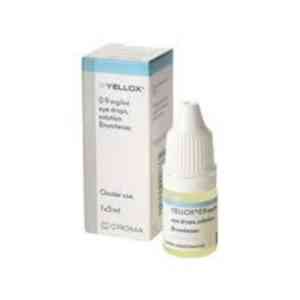

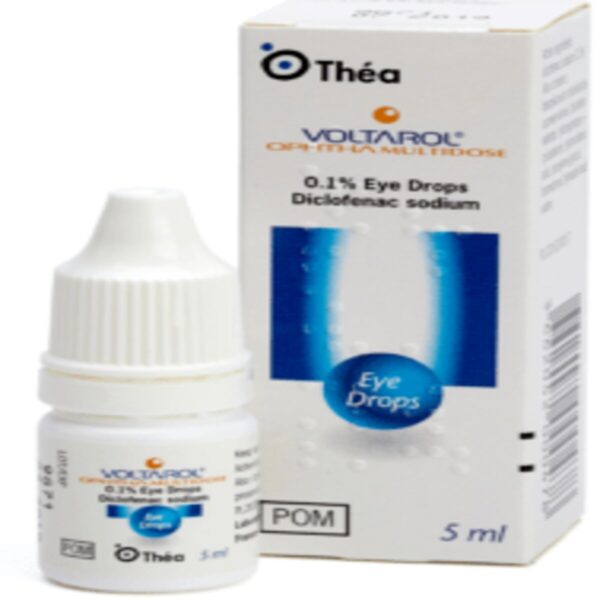
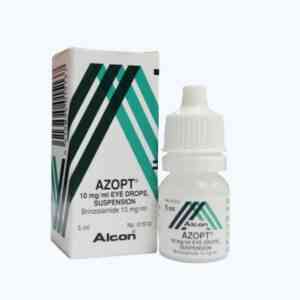
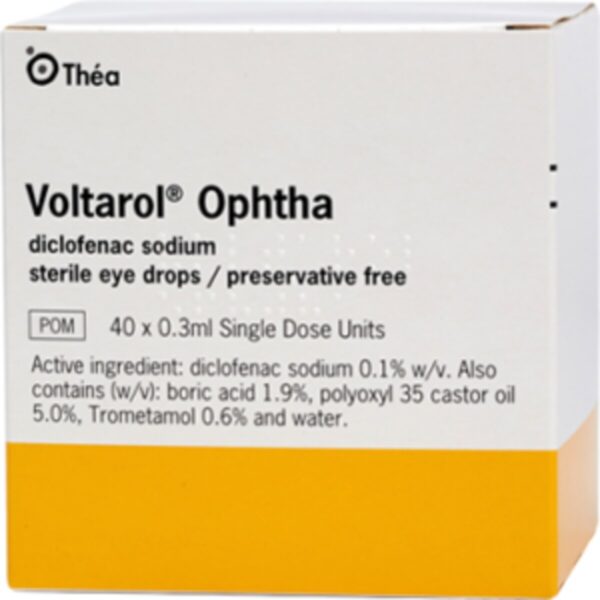













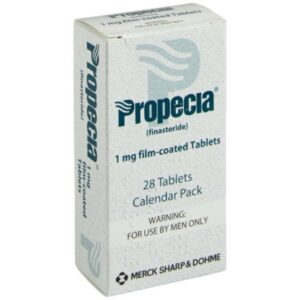
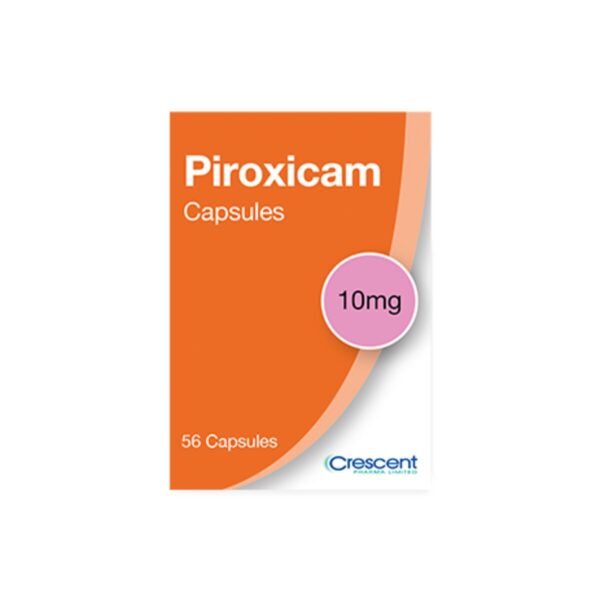
Reviews
There are no reviews yet